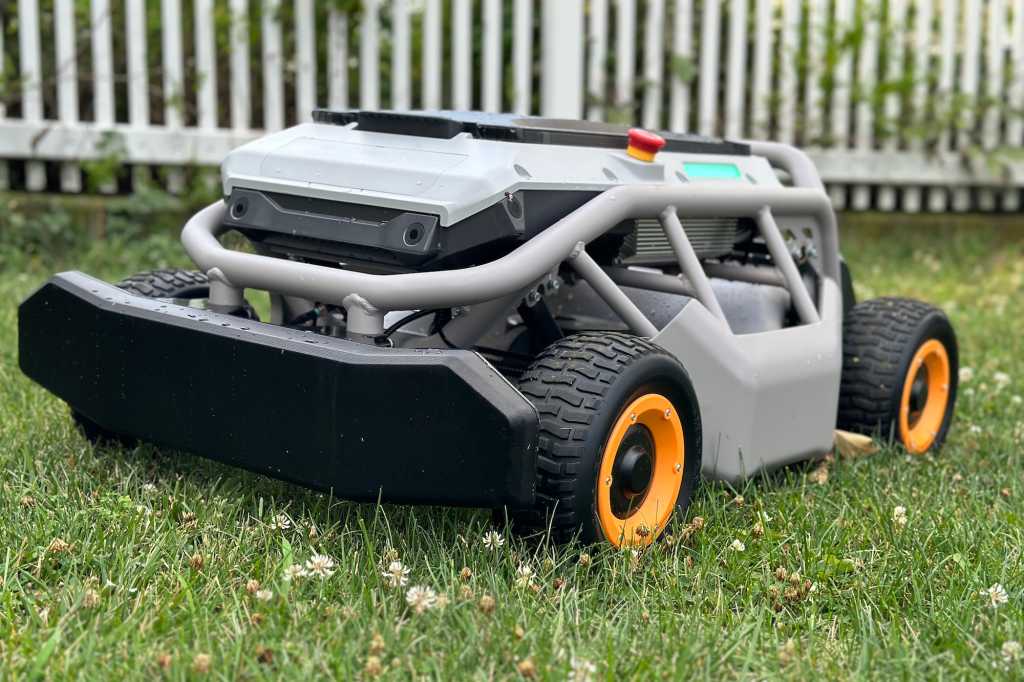Expert’s Rating
Pros
- 21-inch cutting radius
- Highly maneuverable
- Outstanding remote control
- Riding-mower build and cut quality
Cons
- Very heavy (120 pounds)
- Disappointing autonomous obstacle avoidance
Our Verdict
While its obstacle avoidance feels like an afterthought, everything else about the remote-controlled Mowrator S1 robot lawn mower is high end and lots of fun.
Price When Reviewed
$3,399 (during manufacturer’s “Summer Sale”)
Best Prices Today: Mowrator S1 AWD
Robot lawn mowers are great for busy families, people with disabilities, or those who just want to spend more time making their yard look good and less time pushing a mower. But not everyone is ready to accept our outdoor robot overlords. I can’t count the number of people who’ve driven by my house while I was testing one, stopped, and peppered me with questions. While many say, “I need that!” others say, “Cool, but I still like mowing my grass.”
The Mowrator S1 is built for that latter class of gardener. Despite its robot-sounding name, the Mowrator is closer to a remote-controlled car with a mower attached to it than an autonomous vehicle. It’s also built differently: where most robot mowers are fabricated with copious amounts of plastic, the Mowrator is built from the same steel and aluminum materials used in traditional riding mowers.
The Mowrator S1 came from the factory set to run at its highest speed, which had me feeling like I was driving a high-end RC car.
The result is an absolute beast. The Mowrator S1 weighs more than 120 pounds, making it three times heavier than the Husqvarna Automower 435X AWD I reviewed in October, 2020—and that bot is no lightweight. Assembled—a task that requires two people—the Mowrator S1 is nearly two feet wide, a foot-and-a-half tall, and about three feet long, which means it’s no smaller than a conventional push mower.
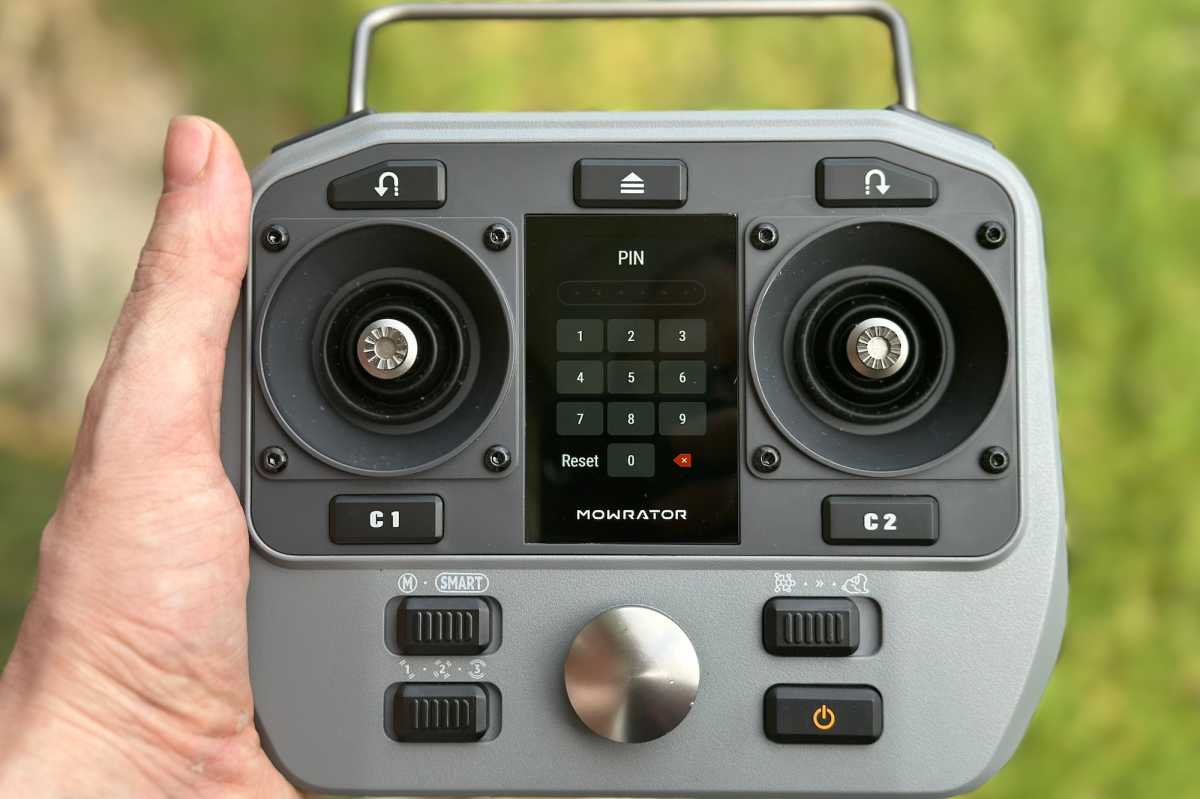
Unlike most robot lawnmowers, the Mowrator is not entirely autonomous. You control it with a remote, much like an aerial drone or an RC car.
Ed Oswald/Foundry
I was glad the manufacturer sent its 4WD model ($3,999). It has a front axle that allows its wheels to tilt up and down, giving it outstanding control on uneven terrain, which my yard has a fair amount of. The $2,999 model S1 2WD has rear-wheel drive, which works best on flat yards and very gradual slopes. Mowrator offers a couple of options for both models, which I did not receive for this review. There’s a $499 auto-dumping grass bag that can also be controlled with the remote, and a $299 vacuum kit for sucking up leaves and other light debris.
While the Mowrator has some rudimentary obstacle avoidance and features like cruise control and auto U-turn that endow it with a modicum of intelligence, that’s the extent of its automation. You’re responsible for controlling the mower wherever it goes.
Setup
Given its size and weight, I thought the Mowrator S1 would be difficult to set up, even with two people. Fortunately, the machine comes mostly preassembled—apart from its wheels—and the need for two people is mostly to get it out of the box. I suppose one person could do it if you cut its box out from around it, but that could complicate a return if you decide it’s not for you. But you’ll still need a helper to tilt the mower while you attach its wheels. I also recommend placing the mower on blocks to keep its axles off the ground while you’re doing that.
The wheels attach easily enough, thanks to grooves inside each tire that match the grooves on the mower’s drive motor. The grass bag goes together like any other mower, and an included chute plug allows you to mulch clippings instead of disposing of them (the latter is better for your lawn).
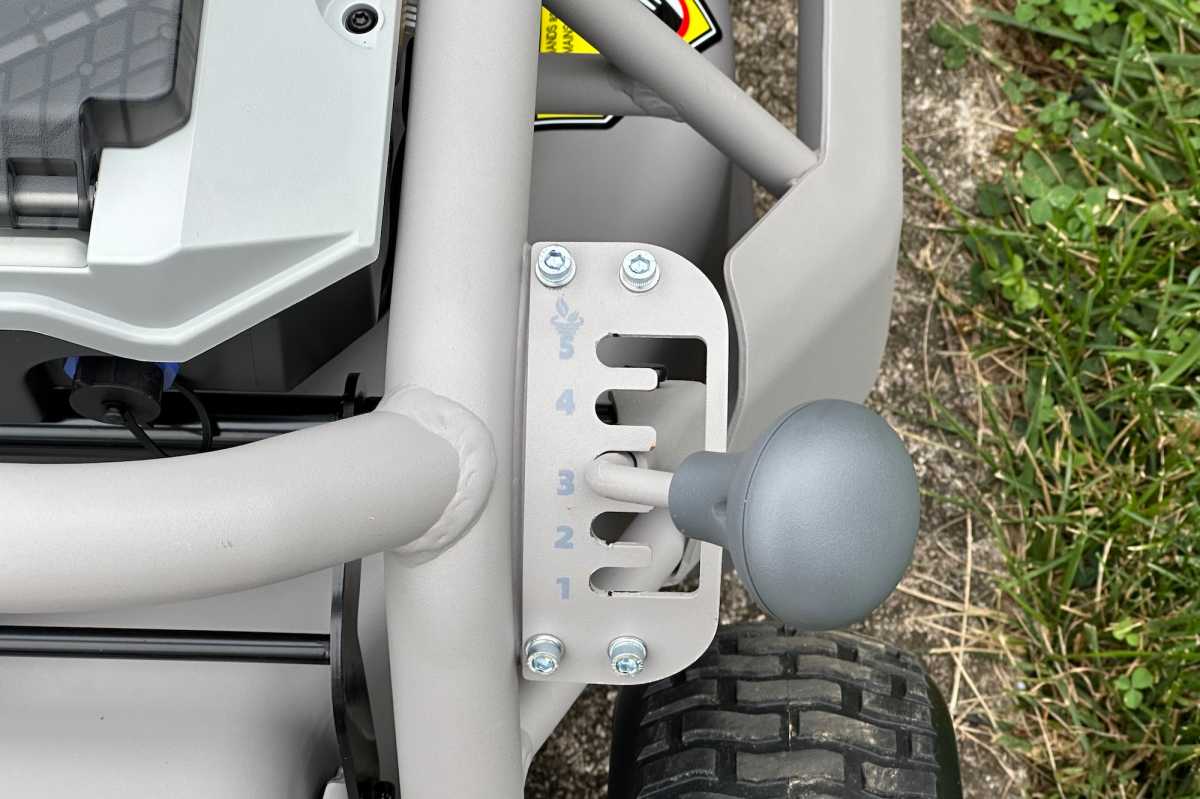
The Mowrator has manual height adjustment and can cut grass as high as 20 inches.
Ed Oswald/Foundry
Mowrator provides all the tools you’ll need, and while some of the screws were difficult to get precisely in their respective holes, I had the job done in about 45 minutes with the help of one other person.
If you use an iOS device, you’ll want to know that Mowrator only has an Android version of its app right now. That downsize is mitigated, however, by the fact that the app is pretty much needed only for updating the machine’s firmware. And the product has only just begun shipping to Kickstarter backers, so it’s very early.
Operation
The manufacturer says the Mowrator S1’s battery should deliver a 2.25-hour runtime, which seems accurate based on my experience. Before my first test run, I charged its partially depleted battery (it was at somewhere between 50- and 75 percent) in less than 30 minutes. After an hour of grass cutting, the battery level was at 65 percent, and it was at 40 percent after an additional 30 minutes of use. The included 600-watt “supercharger” works as fast as any battery charger I’ve seen.
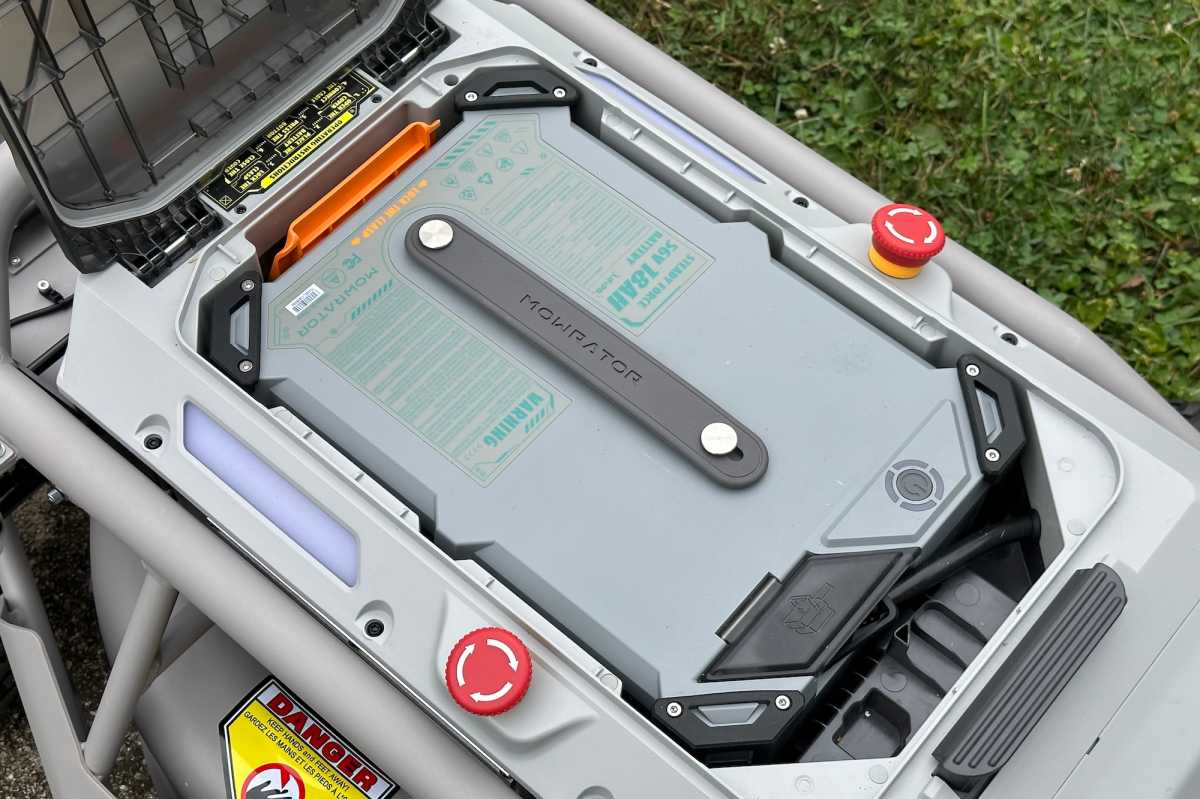
The Mowrator is powered by a replaceable 18Ah battery.
Ed Oswald/Foundry
Unless you’re a skilled RC operator, I highly recommend keeping the Mowrator S1’s obstacle avoidance setting activated. The mower arrived from the factory set to run at its highest speed, which had me feeling like I was driving a high-powered RC car, not a powerful lawn mower with a 21-inch cutting radius. And it’s just as fun as one of those toys, with incredibly responsive controls (I’ll discuss its remote shortly) and the ability to turn on a dime. Once I got the hang of it—start with slower speed setting while you’re mastering it—I finished mowing my ¼-acre yard in less than 20 minutes.
I was particularly impressed with the mower’s ability to scale inclines. The play in its front-axle helps it roll over uneven surfaces, such as the steep transition from the sidewalk to my lawn in front of my house. That’s proven to be a near-insurmountable obstacle for many of the robot mowers I’ve tested, but the Mowrator S1 barely flinched. I also tested it on my neighbors’ yard, which has an even steeper slope, and it had no problem.
The mower’s obstacle avoidance tech, however, can’t seem to distinguish between solid objects and tall weeds. If it encountered anything other than tall grass—it’s adjustable deck can handle grass up to 20 inches high—it would stop and refuse to move. That’s a significant flaw in a mower in this price range.
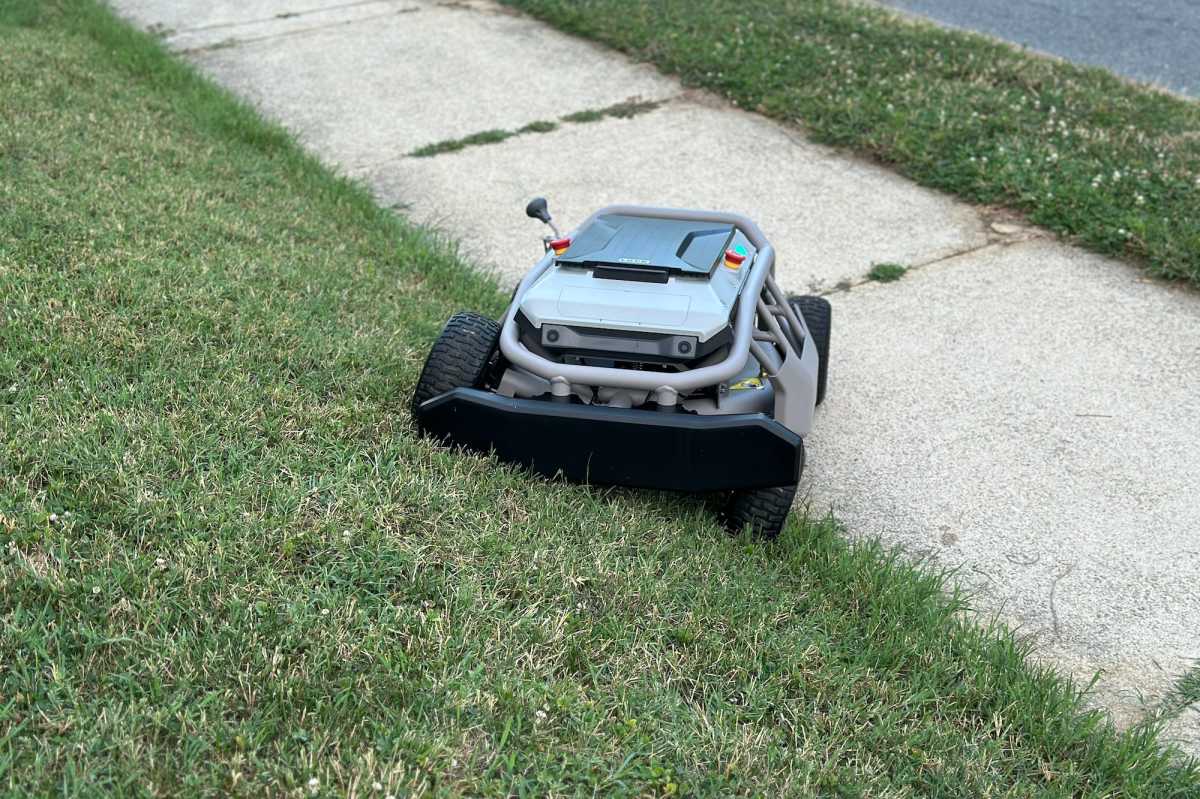
Have a sloped yard? The Mowrator S1 AWD handles inclines with ease.
Ed Oswald/Foundry
You can turn obstacle avoidance off if you want complete control of the mower to put it anywhere you want, or you can turn on its cruise-control and auto U-turn features and just sit back and watch it do its thing—just make sure your yard is free of obstructions. You’ll also need to account for the mower’s grass bag, which makes it more difficult to maneuver in tight spots. That got caught on bushes and shrubs enough times that I ended up removing it.
The Mowrator S1 uses a fan blade to cut grass, and its cutting quality is about the same as a conventional push or riding mower. The spinning razor blades on robot mowers are easier on your lawn, but if you mulch the Mowrator’s clippings, you’ll get good results.
The Mowrator S1’s remote control is solidly constructed, with large buttons spaced perfectly to reduce the chances of your hitting one by mistake. And isn’t as heavy as it looks. As a safety feature, you must hold down buttons on the top of the remote to start the blades, and then tap “start” on its display. While some may see this as an annoyance, I think it’s a good safety feature. If you’re familiar with aerial drones, this controller works much like them. In fact, Mowerator was founded by a team of former-DJI employees. DJI’s aerial drones are a blast, and they’re easy to fly.
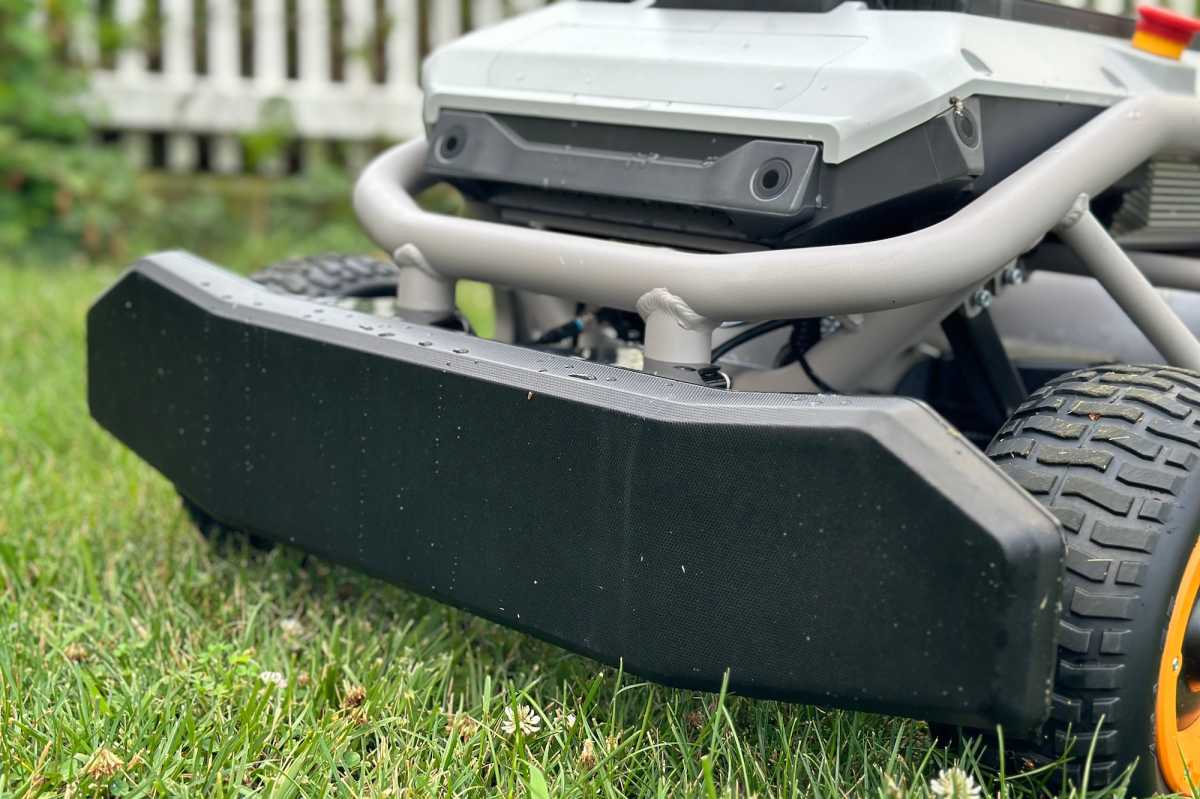
We were disappointed in the Mowrator S1’s obstacle avoidance, despite the multiple proximity sensors in its bumper and body.
Ed Oswald/Foundry
Should you buy a Mowrator S1?
Given its metal construction, maneuverability, battery life, and overall cutting performance, it would be better to compare the Mowrator S1 to a zero-turn riding mower instead of an autonomous robot mower.
Perhaps robot lawn mowers have made me lazy, but I was initially skeptical of this one that depends on me for 90 percent of its operations. After several sessions cutting my grass with the Mowrator S1, however, the only remaining reservation is related to its obstacle avoidance. If you have a good-sized yard—say, an acre or more—and this machine’s $4,000 price tag isn’t a barrier, you’ll find the money well spent.

